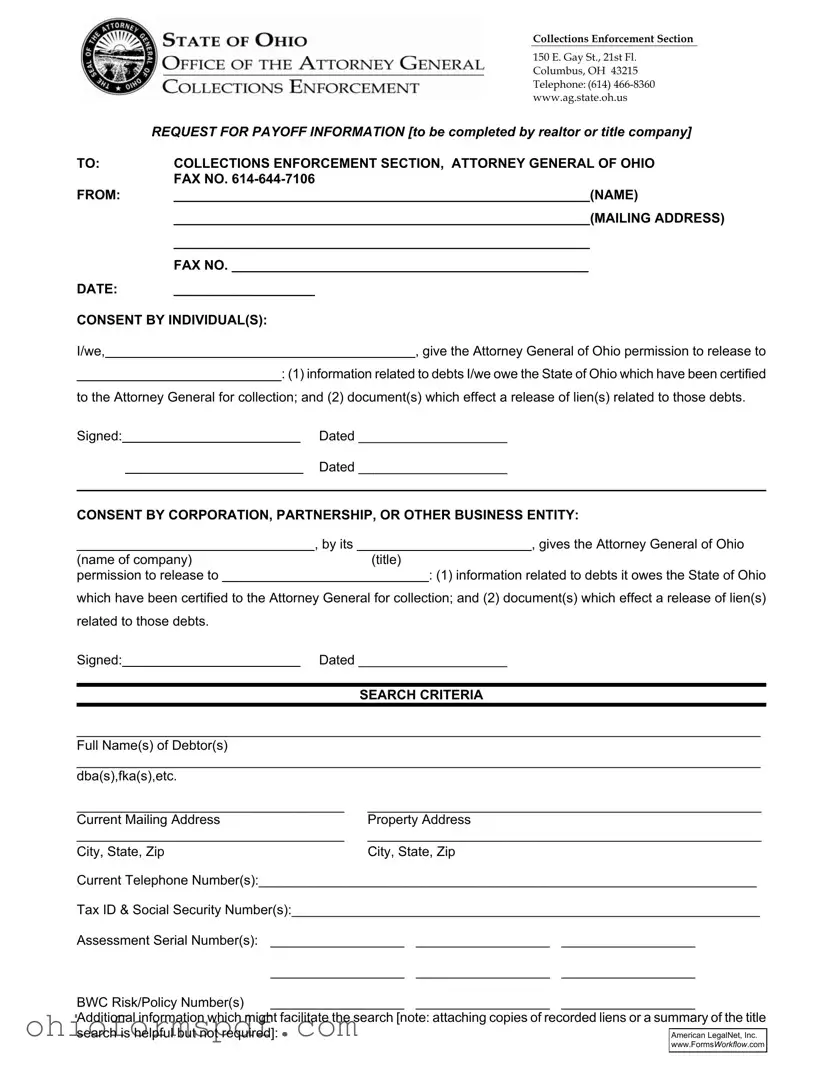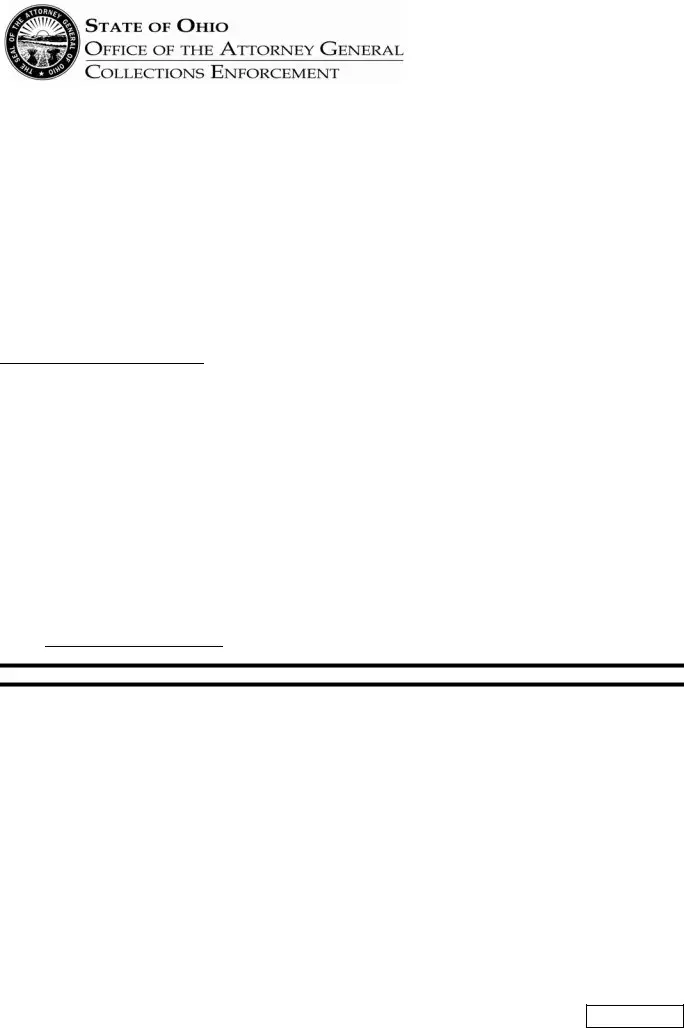The Ohio Payoff form is notably similar to a Mortgage Payoff Statement, primarily due to its fundamental purpose of outlining the amount outstanding that needs to be paid to clear a debt. Both documents play pivotal roles during the closing process of real estate transactions, ensuring that all debts tied to the property or the involved parties are fully settled. They provide detailed summaries of the amounts due, including principal, interest, or any penalties, and specify the effective date through which the quoted payoff amount is valid, ensuring all parties have a clear understanding of the financial obligations that must be met.
Another document akin to the Ohio Payoff form is the Lien Release. Much like the component of the Ohio form which deals with issuing releases of liens upon the settlement of debts, a standalone Lien Release formally acknowledges that a previously asserted lien on an asset, such as property or equipment, has been satisfied. These documents are crucial for the affected party to clear the title of the asset, enabling its sale or transfer without legal encumbrances resulting from the lien.
The Mechanic’s Lien Waiver shares similarities with sections of the Ohio Payoff form, particularly in the context of releasing claims or liens against a property once payment is made. This document is widely used in the construction industry, where contractors, subcontractors, or suppliers waive rights to file a mechanic's lien against the property as confirmation of received payment. Like the payoff form, it serves as a protective measure for property owners and ensures a clear path for property transactions or refinancing by affirming that payments have cleared potential liens.
A Settlement Statement in real estate transactions, which summarizes all costs and fees paid by both buyer and seller, bears resemblance to the Ohio Payoff form in its role of detailing financial obligations and resolutions. This document, often seen in the form of a HUD-1 or a Closing Disclosure, outlines payment flows, including the payoff of existing debts against the property, similarly providing transparency and ensuring that all parties are aware of their respective financial responsibilities and the status of debt settlement.
The Judgment Satisfaction Letter closely parallels the Ohio Payoff form, particularly in its functionality of confirming the full settlement of a debt that was subject to judicial proceedings. This document, issued by a creditor or through the court, formally acknowledges that the debtor has fulfilled their financial obligation as determined by a legal judgment. The issuance of this letter or document effectively releases the debtor from the cited financial liability, akin to how payment as per the Ohio Payoff form facilitates the release of state-certified debts.
The Tax Release Form is another document related to the release aspect of the Ohio Payoff form. Specifically oriented towards confirming the payment of outstanding taxes and the subsequent removal of tax liens, this form serves a vital role in real estate transactions and other contexts where clear ownership and transferability of assets are required. It confirms to relevant parties, such as buyers or financial institutions, that previously owed taxes have been settled and that there are no longer any tax liens impairing the asset's title.
Finally, the Subordination Agreement shares a conceptual alignment with the Ohio Payoff form, especially regarding the prioritization and handling of debts. Though its primary function is to adjust the priority of liens in favor of a new lender, thereby allowing a secondary position for existing debts, it similarly addresses the intricacies of liens and debt settlements within property-related financial transactions. Like the Ohio form, it plays a critical role in the restructuring of debts to facilitate property sales, refinancing, or acquisition of new loans.



